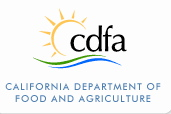Related Research Articles

Agriculture is a major industry in the United States, which is a net exporter of food. As of the 2017 census of agriculture, there were 2.04 million farms, covering an area of 900 million acres (1,400,000 sq mi), an average of 441 acres per farm.

The Agricultural Research Service (ARS) is the principal in-house research agency of the United States Department of Agriculture (USDA). ARS is one of four agencies in USDA's Research, Education and Economics mission area. ARS is charged with extending the nation's scientific knowledge and solving agricultural problems through its four national program areas: nutrition, food safety and quality; animal production and protection; natural resources and sustainable agricultural systems; and crop production and protection. ARS research focuses on solving problems affecting Americans every day. The ARS Headquarters is located in the Jamie L. Whitten Building on Independence Avenue in Washington, D.C., and the headquarters staff is located at the George Washington Carver Center (GWCC) in Beltsville, Maryland. For 2018, its budget was $1.2 billion.

Foodborne illness is any illness resulting from the contamination of food by pathogenic bacteria, viruses, or parasites, as well as prions, and toxins such as aflatoxins in peanuts, poisonous mushrooms, and various species of beans that have not been boiled for at least 10 minutes.

Parthenium argentatum, commonly known as the guayule, is a perennial woody shrub in the family Asteraceae that is native to the rangeland area of the Chihuahuan Desert; including the southwestern United States and northern Mexico. It was first documented by J.M. Bigelow in 1852 through the Mexican Boundary Survey and was first described by Asa Gray. Natural rubber, ethanol, non-toxic adhesives, and other specialty chemicals can be extracted from guayule. An alternative source of latex that is hypoallergenic, unlike the normal Hevea rubber, can also be extracted. While Castilla elastica was the most widely used rubber source of Mesoamericans in pre-Columbian times, guayule was also used, though less frequently. The name "guayule" derives from the Nahuatl word ulli/olli, "rubber".
The United States National Agricultural Library (NAL) is one of the world's largest agricultural research libraries, and serves as a national library of the United States and as the library of the United States Department of Agriculture. Located in Beltsville, Maryland, it is one of five national libraries of the United States. It is also the coordinator for the Agriculture Network Information Center (AgNIC), a national network of state land-grant institutions and coordinator for the U.S. Department of Agriculture (USDA) field libraries.

Food policy is the area of public policy concerning how food is produced, processed, distributed, purchased, or provided. Food policies are designed to influence the operation of the food and agriculture system balanced with ensuring human health needs. This often includes decision-making around production and processing techniques, marketing, availability, utilization, and consumption of food, in the interest of meeting or furthering social objectives. Food policy can be promulgated on any level, from local to global, and by a government agency, business, or organization. Food policymakers engage in activities such as regulation of food-related industries, establishing eligibility standards for food assistance programs for the poor, ensuring safety of the food supply, food labeling, and even the qualifications of a product to be considered organic.

Food safety is used as a scientific method/discipline describing handling, preparation, and storage of food in ways that prevent foodborne illness. The occurrence of two or more cases of a similar illness resulting from the ingestion of a common food is known as a food-borne disease outbreak. This includes a number of routines that should be followed to avoid potential health hazards. In this way, food safety often overlaps with food defense to prevent harm to consumers. The tracks within this line of thought are safety between industry and the market and then between the market and the consumer. In considering industry-to-market practices, food safety considerations include the origins of food including the practices relating to food labeling, food hygiene, food additives and pesticide residues, as well as policies on biotechnology and food and guidelines for the management of governmental import and export inspection and certification systems for foods. In considering market-to-consumer practices, the usual thought is that food ought to be safe in the market and the concern is safe delivery and preparation of the food for the consumer. Food safety, nutrition and food security are closely related. Unhealthy food creates a cycle of disease and malnutrition that affects infants and adults as well.

The National Center for Agricultural Utilization Research (NCAUR) is a United States Department of Agriculture laboratory center in Peoria, Illinois. The Center researches new industrial and food uses for agricultural commodities, develops new technology to improve environmental quality, and provides technical support to federal regulatory and action agencies.

The California Department of Food and Agriculture (CDFA) is a cabinet-level agency in the government of California. Established in 1919 by the California State Legislature and signed into law by Governor William Stephens, the Department of Food and Agriculture is responsible for ensuring the state's food safety, the protection of the state's agriculture from invasive species, and promoting the California agricultural industry.

The Food, Conservation, and Energy Act of 2008 was a $288 billion, five-year agricultural policy bill that was passed into law by the United States Congress on June 18, 2008. The bill was a continuation of the 2002 Farm Bill. It continues the United States' long history of agricultural subsidies as well as pursuing areas such as energy, conservation, nutrition, and rural development. Some specific initiatives in the bill include increases in Food Stamp benefits, increased support for the production of cellulosic ethanol, and money for the research of pests, diseases and other agricultural problems.

Pasteurized eggs are eggs that have been pasteurized in order to reduce the risk of foodborne illness in dishes that are not cooked or are only lightly cooked. They may be sold as liquid egg products or pasteurized in the shell.
The Food Safety Initiative is an interagency initiative begun under the Clinton administration in 1997 to coordinate the activities of the Food and Drug Administration (FDA), the Centers for Disease Control and Prevention (CDC), Environmental Protection Agency (EPA), and the Department of Agriculture (USDA) Food Safety and Inspection Service to reduce the annual incidence of foodborne illness.
Bioproducts or bio-based products are materials, chemicals and energy derived from renewable biological material.

Michael R. Taylor is an American lawyer who has played leadership roles in the US Food and Drug Administration, agrochemical company Monsanto, and law firm King & Spalding. He currently co-chairs the board of STOP Foodborne Illness, a non-profit that supports victims of serious illness and their families in efforts to strengthen food safety culture and practices in government and industry.
The Eastern Regional Research Center (ERRC) is a United States Department of Agriculture laboratory center in Wyndmoor, Pennsylvania. The Center researches new industrial and food uses for agricultural commodities, develops new technology to improve environmental quality, and provides technical support to federal regulatory and action agencies.

Food spoilage is the process where a food product becomes unsuitable to ingest by the consumer. The cause of such a process is due to many many outside factors as a side-effect of the type of product it is, as well as how the product is packaged and stored. Due to food spoilage, one-third of the world's food produced for the consumption of humans is lost every year. Bacteria and various fungi are the cause of spoilage and can create serious consequences for the consumers, but there are preventive measures that can be taken.

The United States Department of Agriculture Southern Regional Research Center (SRRC) is one of four regional laboratories within the United States Department of Agriculture's Agricultural Research Service. Principal research areas of the SRRC include food safety, global food security, climate change, biofuels, agricultural sustainability, health and nutrition. It furthermore emphasizes improved product quality of natural fibers especially cotton, according to the SRRC's mission statement. The SRRC laboratory is located at 1100 Allen Toussaint Blvd, New Orleans, Louisiana 70124-4305. It has an annual budget of approximately $25 million, employing 70 scientists and 130 other people in laboratory support roles.
The Jean Mayer Human Nutrition Research Center on Aging (HNRCA), located in Boston, Massachusetts, is one of six human nutrition research centers in the United States supported by the United States Department of Agriculture Agricultural Research Service. The goal of the HNRCA, which is managed by Tufts University, is to explore the relationship between nutrition, physical activity, and healthy and active aging.
Dietary exposure assessments in the United States involve the evaluation of dietary consumption and chemical residue data while taking into consideration additional factors that may affect a specified population of interest or sensitive population. The process of conducting a dietary exposure assessment involves the determination of the chemical residues on a particular food or foods and the calculation of the dietary exposure to these chemicals based on consumption data for the specified food or foods. A dietary exposure assessment allows a comparison to a relevant health standard such as the acceptable daily intake(ADI), the acute reference dose.

Donald Richard Ort is an American botanist and biochemist. He is the Robert Emerson Professor of Plant Biology and Crop Sciences at the University of Illinois at Urbana-Champaign where he works on improving crop productivity and resilience to climate change by redesigning photosynthesis. He is a member of the National Academy of Sciences (NAS) and a fellow of the American Association for the Advancement of Science (AAAS) and American Society of Plant Biologists (ASPB).
References
- ↑ "Western Regional Research Center (Albany, CA) : Albany Location Contacts". www.ars.usda.gov. Retrieved 2016-02-15.
- 1 2 "Flavor Chemistry Research at the USDA National Historic Chemical Landmark". American Chemical Society. Retrieved 2016-02-15.
- ↑ "Albany's USDA research laboratory to celebrate 75 years". www.thereporter.com. Retrieved 2016-02-15.
- ↑ "Bioproducts Research : Home". www.ars.usda.gov. Retrieved 2016-02-15.
- ↑ "Crop Improvement and Genetics Research : Home". www.ars.usda.gov. Retrieved 2016-02-15.
- ↑ "Exotic and Invasive Weeds Research : Home". www.ars.usda.gov. Retrieved 2016-02-15.
- ↑ "Foodborne Toxin Detection and Prevention : Home". www.ars.usda.gov. Retrieved 2016-02-15.
- ↑ "Healthy Processed Foods Research : Home". www.ars.usda.gov. Retrieved 2016-02-15.
- ↑ "Produce Safety and Microbiology Research : Home". www.ars.usda.gov. Retrieved 2016-02-15.
- ↑ "Frozen Foods Research Time-Temperature Tolerance Studies - National Historic Chemical Landmark". American Chemical Society. Retrieved 2016-02-15.